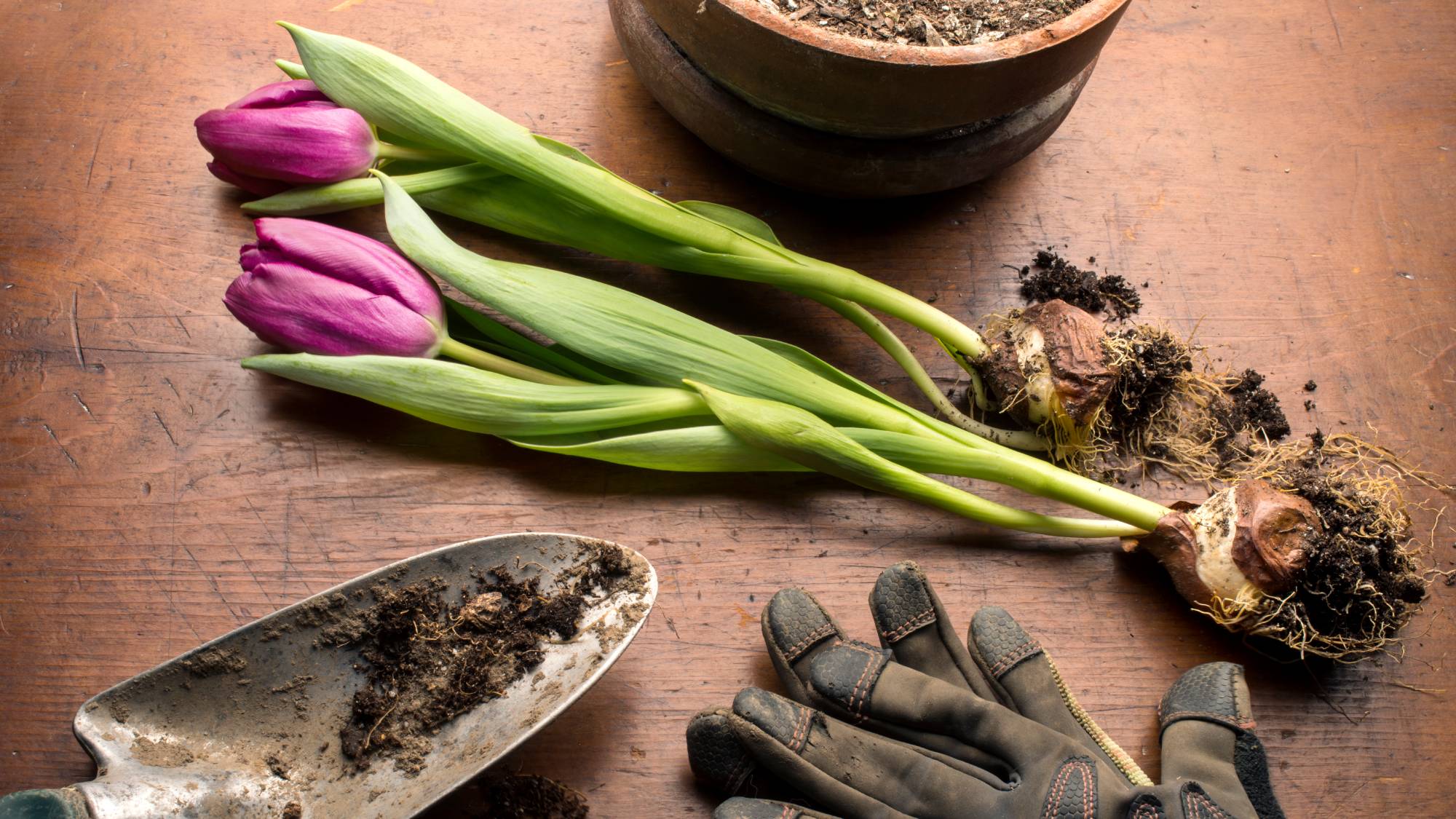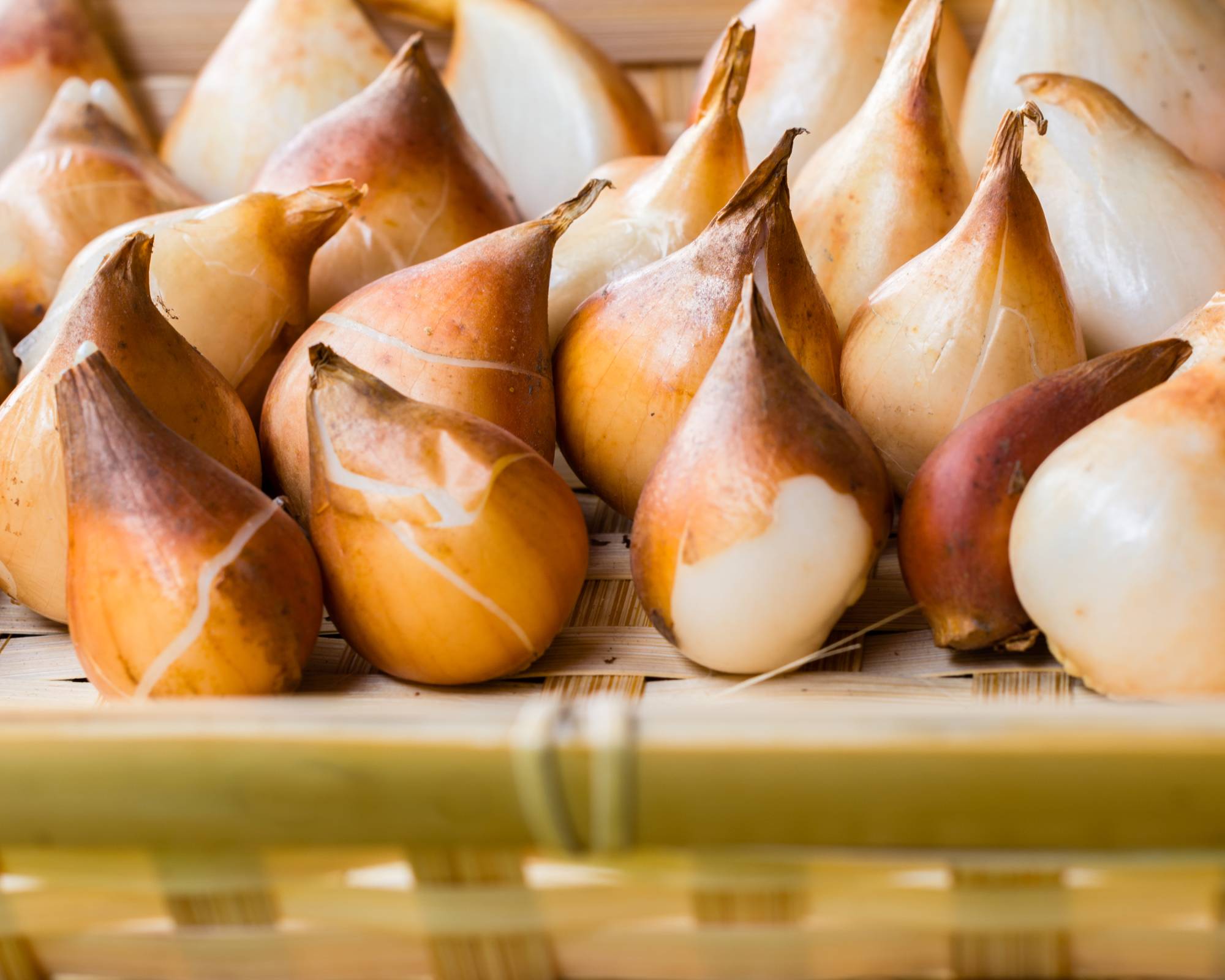How to Divide Tulip Bulbs for More Spring Color Year After Year
Learn how to divide tulip bulbs and when it's necessary. Tulip enthusiasts eagerly anticipate spring’s arrival, but thriving bulbs rely on autumn preparation.


Amy Draiss
Tulips make for a much-welcomed addition to the spring garden. Plants grow quickly and fill beds, borders, and containers with early-season color. Though most will prefer to treat the plant as an annual, many growers have found success perennializing the bulbs. This is best done where weather conditions are well-suited to the task.
Growing tulips in your spring garden will add a fabulous pop of color, but the work begins in the autumn. Buying, planting and dividing tulips should be done in the early fall for the best results. Routine division can further help gardeners to multiply their stock, boosting growth and increasing numbers of plants.
Let’s explore how to divide tulip bulbs properly, taking special interest in good planting practices and aftercare.
Why Should You Divide Tulip Bulbs?
Where conditions are ideal, tulips will multiply freely. While some growers may struggle to get their tulips bulbs to return, those living in drier regions are likely to find division an essential aspect of their care. This is especially true of large plants that have become crowded.
Overcrowding leads to competition for nutrients and will be most likely to impact plant growth in a negative way. Plants in need of division may demonstrate poor vigor, or even fail to bloom. In these instances, separation of bulbs will be vital to the rejuvenation of plants and the establishment of healthy beds.
When to Divide Tulip Bulbs

How often to divide tulip bulbs will vary by the varieties of tulip you have. Those bulbs which perennialize most readily are likely to require more consistent care. The process of dividing tulip bulbs will generally begin in summer, and continue through fall.
Gardeners hoping to dig, divide, and transplant bulbs should allow the plants’ foliage to die back naturally, browning and withering away as each bulb slips into dormancy. Doing so this time will help to prevent potential stress or damage due to the movement of bulbs.
Sign up for the Gardening Know How newsletter today and receive a free copy of our e-book "How to Grow Delicious Tomatoes".
Good timing will also aid new plantings in preparation for winter, allowing ample time for the development of a strong root system before the onset of cooler weather.
How To Divide and Replant Tulips

Those interested in learning how to divide tulips should first familiarize themselves with the plant and its growth. Each season, healthy bulbs will produce a number of offsets, or bulblets. These can be found around the edges of the previous season's “mother” bulb. Offsets continue to grow larger until they are finally able to flower.
Division is used as a means to separate each of these bulbs into new, individual plants. This process begins when tulips are lifted carefully from beds. Gardeners are then able to remove excess soil, breaking apart the bulbs with gloved hands.
Though it is possible to store divisions until fall, experienced growers often find it best to replant immediately, maintaining consistent levels of moisture until the following spring. Make lifting and planting bulbs easy with this handmade Dutch trowel that is available from Amazon.
Storing Divided Tulip Bulbs

Though it is best to plant divided tulip bulbs right away, you can cure and store tulip bulbs until planting time in fall. Preparation for storage is relatively simple, requiring only a few steps. Bulbs should be cleaned well, with growers making certain to remove any or all excess soil. Next, divisions should be dried. This will help to prevent rot, mold, and the potential development of disease. Once dry, new bulbs should be moved to a cool, dark place.
Paper bags or nets are used most frequently, allowing for good air flow and circulation throughout the storage period. Separate the bulbs from each other with sawdust, wood shavings, vermiculite, or coconut coir. These collapsible storage crates and coco coir can be found on Amazon and are perfect for bulb storage. Provided conditions are ideal, bulbs should keep for several months without issue.
Frequently Asked Questions
Do tulip bulbs multiply?
Growers living in climates most suited to tulip growth will see bulbs multiply well. Cool conditions throughout spring will aid in the continued development of bulbs, allowing offsets to grow more rapidly. Those living in warmer regions may see less vigorous growth, resulting in the plant's poor performance as a perennial.
Can you cut tulip bulbs in half?
Though it is possible to multiply some species through cutting, the practice is not recommended for tulips. Tulips are true bulbs. This means that damage to the bulb or its basal plate will greatly reduce the likelihood that it will be able to grow.
Those dividing tulips for the first time are likely to split a few bulbs throughout the process. However, experts advocate for the removal and disposal of damaged bulbs should this occur.

Tonya Barnett has been gardening for 13 years. Flowers are her passion. She has transformed her backyard into a cut flower garden, which she regularly chronicles on her YouTube channel http://www.youtube.com/@tonyawiththeflowers.
- Amy DraissDigital Community Manager